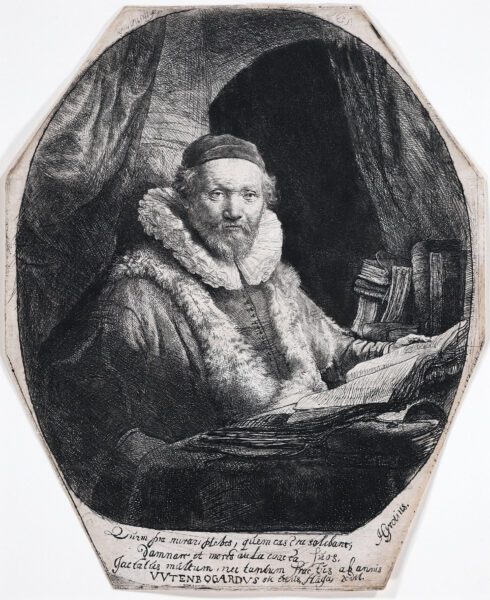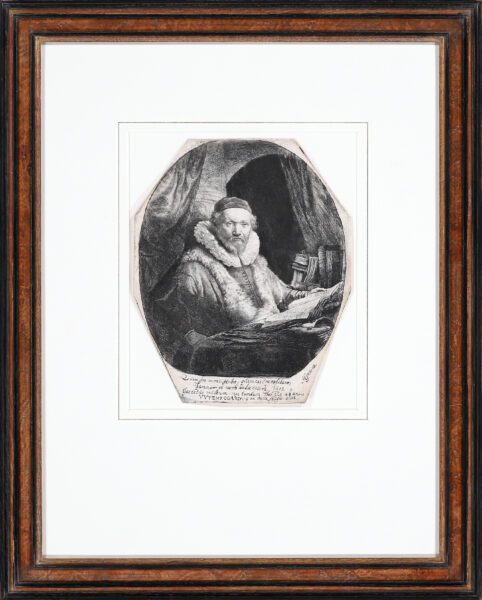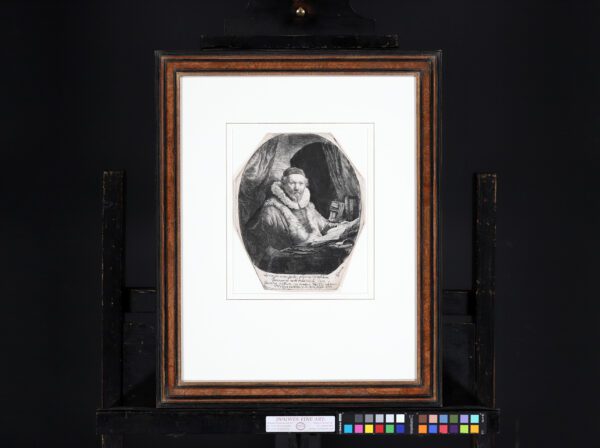“Jan Uytenbogaert, Preacher of the Remonstrants”, 1635
Etching with drypoint on laid paper: 22,7 x 18,6 cm
Signed top left: Rembrandt f and dated top right: 1635
"*" indicates required fields
Notes
During his lifetime, Rembrandt’s extraordinary skills as a printmaker were the main source of his international fame. Unlike his oil paintings, prints travelled light and were relatively cheap. For this reason, they soon became very popular with collectors not only within but also beyond the borders of the Netherlands.
Bedecked in elaborate garb, Jan Uytenbogaert, Arminian Preacher, 1635 sits at his study, an open book in front of him. Rembrandt highlights his subject by illuminating him in light, creating a strong contrast against the dark, draped background. Intricate lines convey the feel of rich fabric, particularly on Uytenbogaert’s collar as well as the fur-lined coat thrown over his shoulders.
As the leader of the Dutch Remonstrants, Uytenbogaert (1577-1644) played a central role in the history of his times. The Remonstrants (or the Remonstrant Brotherhood) is a Protestant movement that had split from the Dutch Reformed Church in the early 17th century. Until Uytenbogaert’s banishment (1618-26), in the wake of the victory of orthodox Calvinism over Remonstrantism, he exercised great political influence, partly in his function as tutor of Prince Frederik Hendrik. After his return to Holland he settled in the Hague, but paid frequent visits to Amsterdam.
The portrait of Uytenbogaert was Rembrandt’s first official commission for an etched portrait. Until that time he had made portrait etchings only of members of his family. The official nature of this portrait is underlined by its Latin inscription (“He who was honored by the pious and the army was damned by the assembled preachers. Worse handled by fate than by time, he now returns, The Hague, to you.”), a common feature of formal etched portraits in the 17th century though a rarity in Rembrandt’s works.
Literature
Bartsch 279; Hind 128;
The New Hollstein Dutch 153: Fifth state (of 9).
Plate in existence – with Nowell-Usticke (1967): C1
Provenance
- With Colnaghi’s, London, with their stocknumber C. 37381 in pencil verso.
- Private collection, Germany
- Private collection, The Netherlands





